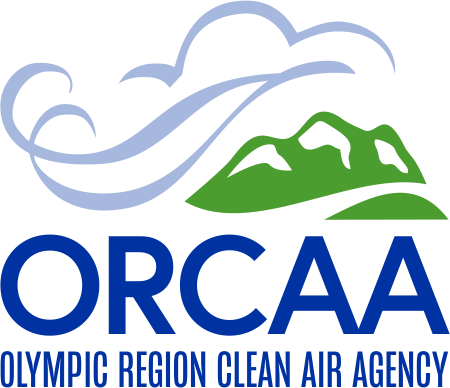Studies, Assessments, and Reports
When opportunities exist, ORCAA addresses various air-related issues with special projects. These range from studies covering the health impacts of air pollution on our jurisdiction, to research into the most air-friendly means of disposing of woody biomass.
Olympic Region Regional Modeling and Health Risk Assessment
The Olympic Region Clean Air Agency (ORCAA) contracted with Dillingham Software Engineering, Inc. (DSE) in 2005 to conduct a regional air quality health risk assessment analysis for the Olympic region. This report presents the results of that project.The project objective is to identify key air pollution sources and pollutants impacting residential and geographic areas in the Olympic Region, and to generally assess the risk to the community from those sources. Ten study areas within the Olympic Region were analyzed. The Sept. 2005 report can be found below.
Report and Emissions Calculator Concerning Woody Biomass Disposal
In 2010, ORCAA worked with the Stockholm Environment Institute (SEI) to study the emissions from the disposal of woody biomass using a variety of ‘fates’ such as on-site compost, pile burning, incinerator burning, etc.
The full 2010 report can be found here:
The report also included an emissions calculator to allow users to compare different ‘fates’ of woody biomass accumulations. The Excel-based tool can be found here:
Air Quality Monitoring Saturation Studies
Results from saturation studies conducted by the Olympic Region Clean Air Agency (ORCAA) will be used to determine where permanent air quality monitors should be located in each of the six counties that ORCAA regulates. ORCAA began this series of studies in Clallam County in 2013, likely followed by Jefferson County in 2014. The study consists of collocating one new ambient monitor, MetOne Profiler 212-2, with the old permanent monitor, an M903 nephelometer, and placing three other identical MetOne profilers at various locations throughout the county. These additional sites are chosen to comply with criteria set out by the Washington State Department of Ecology and the Environmental Protection Agency for ambient air quality monitoring. In addition, we looked at population density, emission sources, and meteorology to determine the best locations for the monitors. The data will show the regional variability in ambient air quality and allow us to identify the areas where human exposure to poor air quality is most problematic. Permanent monitors may be moved or installed, to determine whether a region is in attainment with federal air quality standards.
Study Locations
- Clallam County – concluded April 3, 2014
- Jefferson County – May 2014-May 2015
- Thurston County – September 2015 – January 2017
- Mason County – Concluded June 2020
- Grays Harbor County – Saturation study expected 2019-2020
- Pacific County – Saturation study expected 2020-2021

